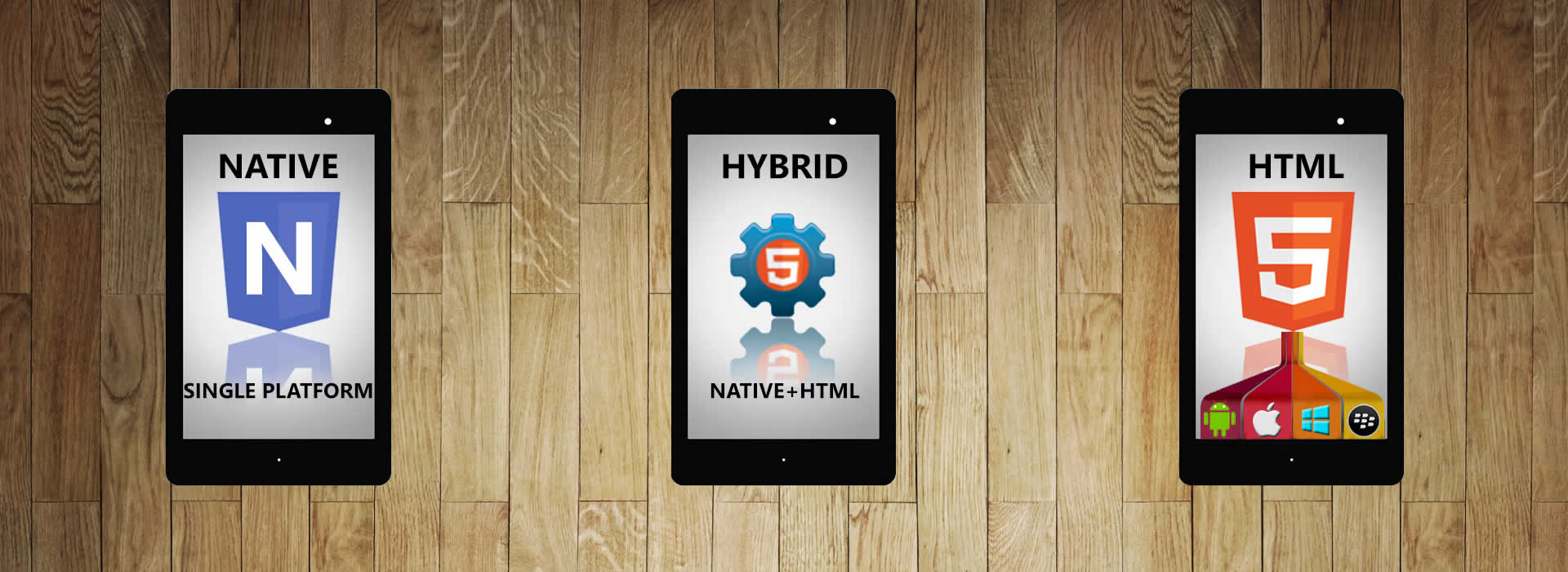The moment you consider investing in a mobile app, you’re immediately faced with a barrage of terminology. To help you choose which approach is best for your app idea in this post we want to introduce you a summary of the differences between the three main approaches to building an app: native, web, or hybrid.
The option you choose largely depends on three main factors: the quality of the experience you want your app to have, the complexity of the features you need for your app to work, and your budget.
Native Apps
A native app is written in the programming language specific for a platform. Each mobile platform offers developers their own development tools, interface elements and standardized SDK. This should enable any professional developer to develop a native app relatively easily. In other words, if we wish our application work on iPhone, Android and BlackBerry, we must develop the same application in three different versions, one for each platform.
Native apps are what typically come to mind when you think of an app. You download them from an app store (such Google Play or Apple Store), they sit within your device’s applications and you launch them by tapping their icon. They can take full advantage of all the device features — they can use the camera, the GPS, the accelerometer, the compass, the list of contacts, and so on. They can also incorporate gestures, use the device’s notification system and can work offline.
There are a number of advantages to writing apps in this way: they offer the fastest, most reliable and most responsive experience to users. They also can tap into the wider functionality of the device and is a key method of engagement: publishers can make use of push-notifications.
In short, building a native app provides the most optimal product experience on mobile devices. However, a higher budget (and time) is needed to build across multiple platforms and keep native apps updated.
Web Apps
At the other end of the scale are mobile-optimized web apps. A web app is an app written in web code that is similar to a website but more interactive so it feels like an app on mobile devices. They are run by a browser and typically written in HTML5. Users first access them as they would access any web page: they navigate to an URL and then have the option of “installing” them on their home screen by creating a bookmark to that page.
Web apps are sometimes designed to look and behave like apps and are in general ideal when the purpose is simply to make content or functionality available on mobile. Actually, in many ways, is hard to distinguish a web app from a native app. For instance, there are no visible browser buttons or bars and users can swipe horizontally to move between sections.
As a main advantage we can point that developing a web app can be simple, inexpensive and quick (they use JavaScript, CSS, HTML5 or other languages), however, their simplicity is also their downside:
They are limited in what they can do effectively in terms of features and they will generally always require an Internet connection to work. They are slower and less intuitive. Furthermore, they are more difficult to build a loyal user-base from and they cannot be distributed through native app stores.
Hybrid Apps
Hybrid apps (or crossplatform) are part native apps, part web apps. They are usually quicker and easier to build (and thus cheaper) than native apps but a step-up from what you can expect out of browser-based web apps. However, the bulk of the app is built using cross-compatible web technologies: you can write code once in a web development language and then translate this over to native iOS or Android code.
Like native apps, they live in an app store and can take advantage of the many device features available. Like web apps, they rely on HTML being rendered in a browser, with the caveat that the browser is embedded within the app.
A hybrid app can be built faster across multiple mobile platforms and cost less compared to native app development, but getting your hybrid app to run appropriately on each platform generally takes substantial work. It all depends on how close you want to get to the “native user experience” or how simple your app is: if your app has a complex feature set, you should consider building a native app to keep your product experience strong.
Is worth noting that when the user accesses your web content online through a hybrid app, performance will be sluggish when compared with a native app. Still, there’s one big advantage in hybrid apps. Being built on one single core, you can add functionality and have multiple versions of the app all benefit from it.
So, what's the answer?
Each of these types of apps has their advantages and disadvantages. There is no one-size-fits-all, perfect answer. When deciding between which app you should build it's important to consider the different factors related to your business. The choice of one versus the other depends on each company’s unique needs.
If you have a mobile app project coming up feel free to contact us. We will be happy to help your to determine what option works best for you.

About Emiliano
Emiliano is a Software Engineer with more than 6 years of experience developing Web and Mobile applications for some of the most important Fortune 500 companies
Nowadays Emiliano specializes as Engineer on the Mobile department of TISA, looking for implementing the latest technologies and frameworks to be used in future projects.
Beyond his technical knowledge and passion for the technology Emiliano enjoys playing Volleyball, Swimming and going to the Gym, he also like reading books and playing online video games.













